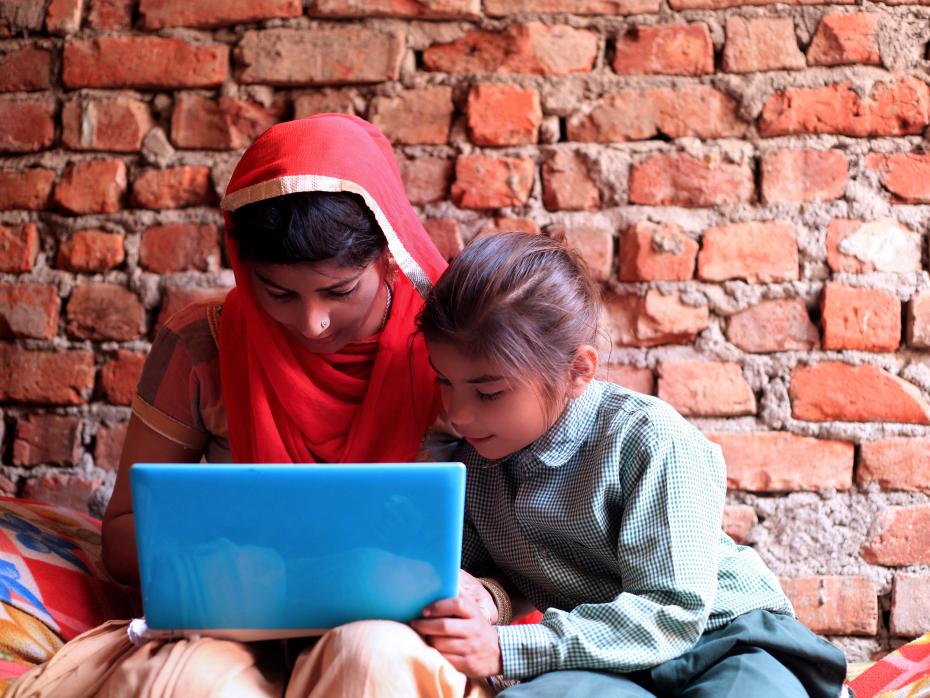A recurring theme in public commentary on the pandemic has been the idea that in dire circumstances, the world made a sudden, unexpected and not entirely unwelcome jump into the future.
Events, not strategies, drove rapid adaptations in education, healthcare, government and business. These helped keep critical services functioning and opened a door to new ways of work and study. But if it’s true that we’re now experiencing accelerating digital transformation across the economy and in our own institutions, how do we address the situation of those people who have the most to gain from education if they lack the means to keep up with new tech?
The words we use are a good place to start. Policymakers and researchers often speak of the “digital divide”, the gap between those who can and cannot take advantage of the new digital economy.
More recently, and especially during the pandemic, the language has shifted. “Digital poverty” has become a key term in public policy and educational circles. The term is not new, but it is now being widely used because it offers a useful way into a complex and urgent problem − and it carries with it an important call for action.
The idea of digital poverty recognises how important digital resources have become in life. We now place digital resources among things we recognise as essential for individual and social well-being alongside housing, healthcare and education.
This means we no longer see digital capabilities as augmenting life or as a source of additional options for study; instead digital capabilities are recognised as critical to contemporary education, work and citizenship. Twenty years ago, a lack of digital skills may not necessarily have been a life-changing disadvantage; today the economic and social consequences of digital poverty are severe.
Beyond that, digital poverty is not simple. Just as digital connections are now embedded in everyday life, deficiencies in the provision of digital resources are also multifaceted and persistent and have multiple causes and consequences. The internet was once considered a potential equaliser, a pathway for social mobility. The problem now is more about attempting to ensure that vulnerable and disadvantaged people do not fall further behind in economic or educational opportunity.
The language of digital poverty points to the fact that digital connections are not just a matter of whether people can access the internet. For governments and universities alike, it is not enough to proceed on the bland assumption that all HE students will have sufficient digital access, tools and/or skills. A basic connection may enable a student to appear in a virtual classroom or message a tutor, but digital presence alone offers little assurance that the student can make the most of the resources offered.
There are many reasons why. Some of the causes of digital poverty are about inadequate public and private infrastructure, the unreliable connections many people experience when required to study from home. Some of the causes of digital poverty are about whether people have adequate space, at home or elsewhere, to use digital tools.
But an important, simple and often overlooked issue is the affordability of internet service, a growing challenge for low-income budgeting. The costs of mobile data and the confusing array of consumer broadband offerings are a key area of concern here, especially when many family budgets have been under unusual pressure and library closures have made wi-fi access difficult.
Devices also matter. Smartphones are extraordinarily widely used, but despite their remarkable sophistication and complexity, as tools for study and creation they have limitations compared to laptop or desktop computers. Then there are those repertoires of personal skills and literacies required to navigate online services safely, and whether people have the time and opportunity to acquire and improve them.
All these facets of capability need to be considered. Addressing digital poverty is not a simple matter of more or better technology or infrastructure. It is unlikely to be fixed by reduced prices, better engineering or design, or a patchwork of small-scale, stop-gap interventions.
As always, universities and colleges can respond better to the diverse needs of all our students. But the resources of educational institutions have been stretched, and effective measures will demand coordination with governments, businesses and the community. An important precondition for that will be a clear understanding of the complexity of our highly stratified internet, including a basic recognition that digital poverty among students is not restricted to those at school.
Accelerated change has achieved remarkable things in teaching, but it has also raised the stakes when it comes to our collective digital capabilities. Governments everywhere are expecting new technologies to drive economic recovery. The whole higher education sector, from the sciences to the humanities, will be a vital source of the ingenuity and innovation required.
But the recent experience of universities demonstrates how important it is that such strategies include planning for a more inclusive digital economy. Like other forms of deprivation, digital poverty must now be the focus of concerted strategic attention.
Julian Thomas is director of the ARC Centre of Excellence for Automated Decision-Making and Society at RMIT University, Melbourne, Australia.




comment